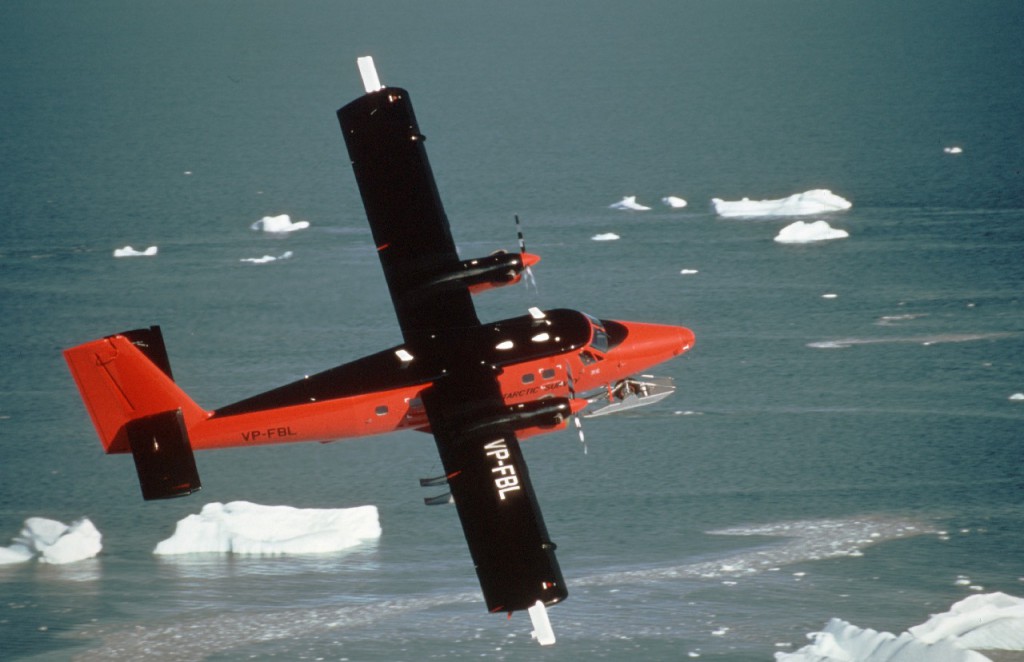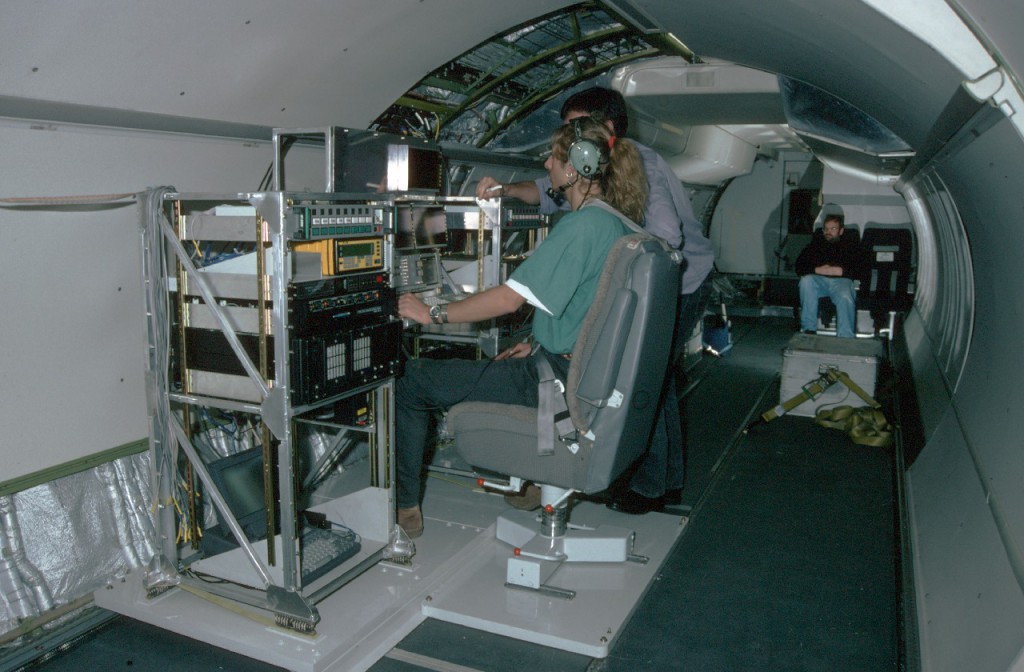Gravity measurements from aircraft
BAS operates a sophisticated facility for airborne measurement and collection of magnetic, gravity and radio echo sounding information. Collectively these are called aerogeophysical data. All three measurement systems are operated routinely from one of the BAS de Havilland Twin Otter aircraft; the aeromagnetic and aerogravity systems can also be deployed in the BAS de Havilland Dash-7 aircraft.

How can we obtain a picture of the structure of the Earth below us from measurements of the gravitational field at the surface? We know that acceleration due to gravity changes with position on the Earth’s surface and that gravity changes depend on the mass of all the surrounding bodies and their distance away from the point of measurement. Within the Earth there are different rock types and different rock types have different densities. Therefore part of this change in gravity can be related to the relative position of rock structures of differing mass. So by making surface measurements of the acceleration due to gravity, a picture of the Earth’s geological structure can be obtained.
Gravity measurements are particularly important in Antarctica, because as the surface geology is permanently covered in ice, we don’t even have a crude picture of the geology of large parts of the continent. Why make gravity measurements from the air? The simple answer is logistics, a lot of the Antarctic is inaccessible to land travel and it would take 3 months to travel on land the same distance covered in a three-hour flight. However, there are problems with taking gravity measurements in the air. Most instruments that measure gravity will also detect the vertical acceleration of the aircraft, which is 100,000 times greater than any changes in the gravitational acceleration due to changes in the Earth’s density structure. Therefore the position of the plane needs to be continuously measured to cm precision. Only relatively recently could this be achieved using satellite positioning systems, and so aerogravity is still a developing technology.
BAS has developed an aerogravity system that can be mounted in one of its aircraft. The system has been used to collect over 100,000 km of data since it was first deployed in 1993. So far the measurements have been used to map changes in crustal thickness along the Antarctic Peninsula and have helped define highly accurate models of the Earth’s shape, which are then used to predict satellite orbits.
Aerogravity measurements are acquired with a modified LaCoste and Romberg air/sea gravimeter model S-83. The three main parts of the system are the gravity sensor (essentially a weight suspended from a sophisticated spring-balance), the gyroscope-stabilised platform (active systems that damp-out vibrations due to movement of the aircraft), and an external platform control system (the computer system that collects and stores the data). To minimize motions due to the pitching, yawing and rolling of the aircraft in flight, the meter platform is mounted at the centre of motion of the aircraft.

